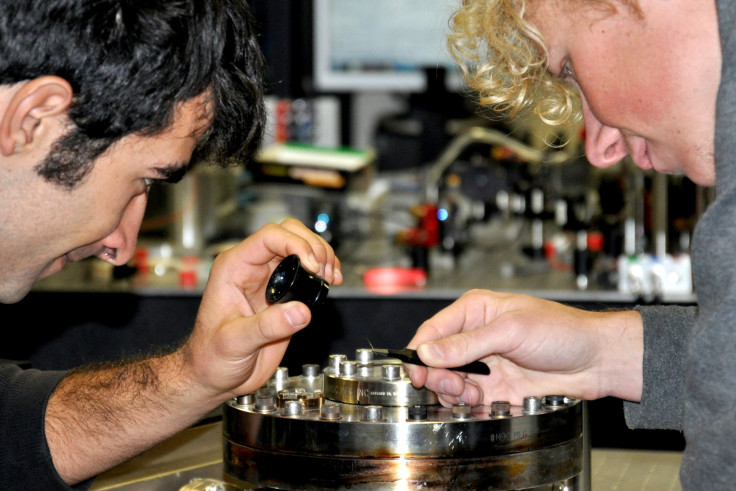Scientists Use Lasers To Make Microscopes 20 Times More Sensitive

A group of physicists in Australia have developed a unique way of using laser beams to make atomic-force microscopes so sensitive and advanced that they can detect forces as small as the weight of a virus. The scientists have claimed that the new method can make a microscope 20 times more sensitive.
According to scientists from the Research School of Physics and Engineering at the Australian National University in Canberra, laser beams can cool objects under the scanner to more than 500 degrees Fahrenheit below zero. The new technology is expected to help scientists improve the resolution of contemporary atomic-force microscopes.
“The level of sensitivity achieved after cooling is accurate enough for us to sense the weight of a large virus that is 100 billion times lighter than a mosquito," Ping Koy Lam, who led the research, said in a statement.
Although atomic-force microscopes are considered popular tools for measuring nanoscopic structures and the tiny forces between molecules, the probes are susceptible to minor vibrations that can interfere with accurate measurements.
“At room temperature the probe vibrates, just because it is warm, and this can make your measurements noisy,” Ben Buchler, a co-author of the study, published in the journal Nature Communications, said in the statement. “We can stop this motion by shining lasers at the probe.”
As part of the study, the researchers used a force sensor, which was a 200 nanometer-wide silver gallium nanowire coated with gold.
“The laser makes the probe warp and move due to heat. But we have learned to control this warping effect and were able to use the effect to counter the thermal vibration of the probe,” Giovanni Guccione, a doctoral student on the team, said in the statement.
However, one disadvantage of the technique is that the probe cannot be used when the laser is on as the laser's energy overwhelms the probe's sensitive measurements. According to the researchers, the solution is to turn the laser off and take the microscopic measurements before the probe returns to room temperature within a few milliseconds.
“By making measurements over a number of cycles of heating and cooling, an accurate value can be found,” the researchers said.
© Copyright IBTimes 2025. All rights reserved.






















